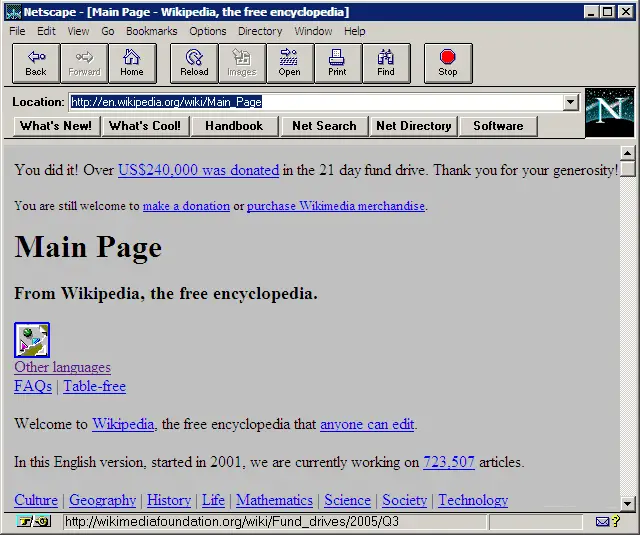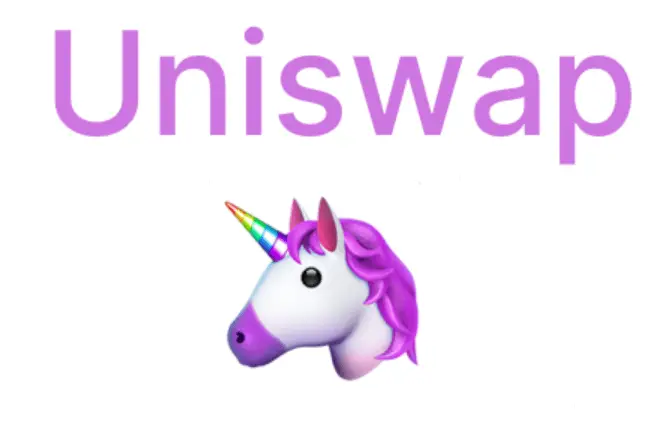The Internet: It has long been an everyday part of our lives. However, the internet has gone through many developments over the years. Where in the past we could only read some text, the web has now become very interactive.
We seem to be on the brink of another drastic change on the web. There is a lot of talk about the switch from Web2.0 to Web3.0. But what exactly is Web3.0? How does it work? And what will the internet look like during Web3.0? You will find answers to all those questions and more in this blog!
The history of the Web
In order to understand what Web3.0 is, it is smart to first look at the history of the Web. Before Web3.0 we had Web1.0 and Web2.0. When you understand exactly what these first 2 Webs are, it’s a lot easier to understand what Web3.0 is and why it just might be the future.
What is Web1.0?
So, first of all, let’s look at the beginning of Web: Web1.0. Web1.0 is the very first form of the web, the early days of the internet. Web1.0 didn’t get its name until Web2.0 came into existence, but that doesn’t matter for now. Web1.0 came into existence in 1993 when the World Wide Web was opened up to everyone and ended in 1998 when Web2.0 came into existence.
Web1.0 consisted of simple websites. Think of a web page where you couldn’t really do anything, just read some information. It was not interactive, but there was a lot of content available. They were basically books but processed on the web.
The web was still quite small at the time, but it was a way for people to get a lot of information at their disposal. The foundation for what would later become Web2.0 and now Web3.0 was laid here.

What is Web2.0?
In 1998 we made the switch to Web2.0. During Web2.0, the web was increasingly used as a means of communication. From now on, users of the internet could actually start contributing to the web. The internet became more and more interactive.
From now on you had not only encyclopedia-like web pages but also social networking sites, blogs, video websites, etc. Web2.0 is basically how we know the internet today. You can basically do just about anything you can imagine.
You can also add something to the internet yourself, for example by posting your own website or a comment under a page, but you are not in charge. Major players such as Google, Facebook, and Amazon still determine what happens, for example by means of algorithms, but also simply by how much influence they have.
If you want to know all the differences between Web2 and Web3, you can read this article.

What is Web3.0?
The latter will change in Web3.0. In Web3.0 we are actually all in charge of the web. Open source is an important part of Web3.0, everyone can add something to the web with Web3.0.
In addition, all data will be interconnected in a decentralized manner. This is perhaps the biggest change from Web2.0. Where the data was first in the hands of a number of large (central) players, it is therefore stored decentrally with Web3.0.
The chance that cryptocurrency and blockchain will contribute a lot to Web3.0 is very high. Blockchain is also decentralized and it is also a ledger in which data can be stored. You would say it fits exactly with Web3.0.
can Smart contracts also contribute enormously to Web3.0? Smart contracts are fully digital contracts, which consist of computer code. Smart contracts can ensure that certain tasks are performed automatically, yet safely, without the need for a middleman.
With Web3.0, the web would therefore handle data more intelligently and would often be able to process it decentrally and automatically. Everyone would contribute to the web and there are no real superpowers running the web anymore.

The Advantages and Disadvantages of Web3.0
Like everything else, Web3.0 has both advantages and disadvantages. Now let’s look at these advantages and disadvantages.
The benefits
First, let’s look at the benefits. The first advantage is of course connecting all data. The internet is becoming a kind of big web, as it were, in which all data is stored in a decentralized way.
Another advantage is that the layout often looks beautiful, yet simple. Surfing the web will also be much more productive and users will collaborate more, for example through open source.
Also, working via the internet will be more effective and easier, because it is more personalized. You decide what you see, and that is no longer determined by superpowers such as Facebook or Google.
This is immediately something that is seen as an advantage by many people. It is decentralized, and big players are no longer in control of your activity on the internet. Whether you see this as an advantage is of course only up to you to determine.
These are the main advantages of Web3.0, but when Web3.0 is more widely used, we can of course really say what the biggest advantages of the new form of the Internet are.
The disadvantages
Of course, there are also disadvantages associated with Web3.0. For example, the somewhat older devices will probably not enjoy Web3.0. These devices are too old and may not be able to connect to the network.
In addition, websites dating from the Web1.0 period will look very outdated. As a result, they will probably no longer be used and will be ‘buried’ somewhere on the web.
Also, Web3.0 will probably be quite difficult to understand for total newbies at first. For example, it will not be that difficult for people who have already used different blockchain protocols, but someone who has no experience in this at all will need some guidance in the beginning.
Another disadvantage is that it may be easy to find information about other users. Since everything is stored in one big web of information and is public, you can also find a lot of information about other users here.
It can also be seen as a disadvantage by people that there is no longer a superpower in control of what is happening. Although it is of course not ideal to have to view an advertisement every 3 posts on Facebook, Facebook does ensure that everything is run smoothly. They make sure that the posts are checked and that everything stays safe. They remove scammers from the platform and protect you from things you may not want to see. None of this would be the case when Web3.0 was fully adopted. There are no longer any superpowers that control everything, so you could, for example, be more easily exposed to scammers or other parties that you do not want to deal with.
Examples of Web3.0
Of course, you only get a really good idea of what Web3.0 can be exactly when you have concrete examples of Web3.0. You can actually compare it best with dApps, as we already know them.
dApp stands for decentralized application. You can actually think of dApps as the software of the blockchain.
Software as we currently use it, such as Microsoft Word, Google, and GTA V, is centralized. Users cannot simply see how it works exactly, nor can they simply participate in it.
With dApps, and as we explained earlier about Web3.0, this is possible, because it is open source. This means that the code of the software is public and anyone can access it, and can therefore copy and use it.
Examples of dApps at the moment are DEX’s (decentralized exchanges). A decentralized exchange is an exchange that no one is in control of, other than a central exchange. The liquidity here is therefore provided by the users and the entire exchange can exist at all through the efforts of the users.
A concrete example of a dApp is for example Augur. Augur is a dApp on the Ethereum network and you can actually compare it to Unibet. You can use Augur to bet on the outcome of certain events. Think, for example, of sports competitions, such as MMA fights or MLB baseball matches, but also the outcome of the crypto market. For example, you can bet on whether the price of a certain cryptocurrency is above a certain target on a certain date. Augur is therefore completely decentralized and open source.
Another concrete example of a dApp is Everipedia. Everipedia is a dApp on the blockchain network and you can best compare Everipedia with Wikipedia. Everipedia contains information and news about basically everything that has to do with blockchain. Anyone can add articles to Everipedia and it is completely decentralized. For example, nobody determines what is and is not allowed on the platform, because nobody has power over the platform.
Investing in Web3.0
You may have thought while reading this blog: how can I invest in Web3.0? Not a crazy question at all, because the popularity of Web3.0 has been increasing rapidly in recent months. The most obvious way to invest in Web3.0 would be to invest in Web3.0 protocols, such as one of the aforementioned dApps.
You can easily invest in the token of a DEX. Think of the token of Uniswap, UNI, or the token of PancakeSwap, CAKE. When you invest in the token of a DEX, you are basically investing in the success of a DEX. The token often serves as, for example, a governance token. This means that owners of the token can vote on the future of the platform. So the more people use the platform, the more people will want to participate in the decision-making process, and the more people will buy the coin and this would cause the price to go up.
For example, another concrete example of an investment in Web3.0 is Filecoin. Filecoin is a decentralized protocol that makes it possible for anyone to “loan” storage space on their computer. Everyone can, therefore ‘buy’ space on the network. It’s actually similar to Google Cloud or Amazon Web Services as we know it today, except that the space is lent by the users themselves, rather than by the superpowers, in this case, Google and Amazon.
This way you have a Web3.0 project for almost everything we see on the internet right now. With a little bit of research, you will often have quickly found a Web3.0 project that offers a solution to a certain problem and you could therefore invest in this.
Conclusion
Web3.0 could just be the new internet. It seems more and more that after Web1.0 and Web2.0 we are now moving towards Web3.0.
Web3 is a new form of the Internet, where power is no longer in the hands of a number of superpowers. Not only is power no longer in the hands of a few superpowers, but everyone who uses it also contributes to it at the same time. In addition, it is perfectly adjusted as everyone wants for themselves.
That of course sounds ideal! However, there are of course both advantages and disadvantages. For example, you can see it as an advantage, but also as a disadvantage that there are no longer any superpowers in the game, and everything is decentralized.
Although it is no longer determined for you what you can see, it is no longer controlled what you can see. For example, you can be more easily exposed to scammers.
There is certainly a chance that Web3 will be everywhere in a few years, so you could invest in it. However, none of what you’ve read in this blog is financial advice, so you should always do your own research and only invest based on your own findings.
